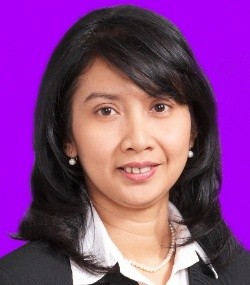Case Document
MR. SAFETY: THE CO-BRANDING STRATEGY OF PT BERSAMA BANGUN PERSADA
This case describes how PT Bersama Bangun Persada (BBP) – an Indonesian distribution company of Fischer, a wall fixing’s market leader product from Germany – tried to find a solution to their problems. BBP had been trying to find a way to being non-dependent from their principal product brands which could be withdrew anytime if they did not perform and deliver the number as requested, especially in facing high competition from other products with lower price.
The management had performed a co-branding strategy of their own brand, Mr. SAFETY, with their represented brand, Fischer. The strategy was conducted to avoid unnecessary conflict and without sacrificing the company good partnership collaboration with the Germany principal, which could act as umbrella brand for several brand that currently distributed by the company.
HOLCIM: OFFERING SOLUTIONS THROUGH MARKETING INNOVATION
This case discusses how Holcim Indonesia differentiates themselves from the stagnant competition in the cement industry by implementing integrated marketing communication. Holcim came out stronger when they launched their “Solusi Rumah” program. The program targeted the low- and middle-income earners in the suburban and rural areas as a continuation of their disaster relief support for the victims of Aceh and Yogya.
The dilemma of the case focuses on what Holcim Indonesia should do in order to continue growing and consistently bringing innovation in the market. The hurdle is that people perceived cement as a commodity product.
BSD CITY : BIG CITY, BIG OPPORTUNITY
Preconceptions about models of housing in Indonesia had begun to emerge since the ancient kingdoms in Indonesia. In each chapter of its history every kingdom had a housing concept that was almost the same, although in the model and style of the building were sometimes different.
Various models and styles of Europe were presented by the Dutch in the development of housing in Indonesia when the Dutch came to power in Indonesia in the 15th century AD. Old patterns that putt Kraton as the center of every things then shifted in the arrangement of the economic center which became the foundation of the city arrangement.
From the two models of housing that exist at the time, was an embryo for the emerging of business and property developers in Indonesia. Then that management is more neatly arranged by the government of Indonesia. This can be seen by the emerged of Perum Perumnas, BTN, and etc. Besides models of the building that existed have more styles and a variety of models.
Until 2009, the population in Jakarta was 7,871,215 peoples, as stated by Abdul Kadir as the Head of the Population and Civil Records of DKI Jakarta. With the rapid development of economic activities and with the creation of new employment fields had attracted workers from outer area, had lead to urbanization problems. Uncontrolled urbanization had caused various problems, including the emergence of imbalances.
With such an imbalance, there arose a variety of other problems such as lack of discipline of life, security, slum areas, homeless, crime, health activities, education, urban transportation and etc. Thus, the rapid population growth was the major problem that was greatly influenced the development of Jakarta, and therefore the need for government to made policies surrounding buffer area of Jakarta, including Tangerang.
ALL NEW CRV: ALIGNING MARKETING STRATEGY FROM GLOBAL INTO LOCAL
This case illustrates how the Honda prepared and globally market its product, the All New CR-V. as a global player in the automotive industry, Honda CR-V prepared toward multinational research to fit with consumer expectation. Markets its products globally, Honda has the advantage in terms of economy of scale and greater marketing opportunities.
When the CR-V to market in Indonesia, Honda do domestic marketing such as choosing the target market, product positioning, and integrated marketing communication. Many factors contributed to the success of the CR-V in Indonesia, but the value proposition CR-V looks to be a key factor. Honda is able to provide driving comfort sedan to a Jeep with a relatively lower price than its competitors at that time. Through this case study participant is expected to learn how to prepare a global company doing domestic product and marketing to increase product penetration.
BLITZMEGAPLEX: RAISING THE BARS OF FUN AND FANTASY
In late 1980’s cineplex concept was popular in Indonesia and was one of the favorite place for the young people to hang out. There were only several cineplex players in Indonesia; however the Group 21 was the dominant players.
In 2006, Blitzmegaplex came with the concept of one stop entertainment and Beyond Movie tagline. In each of Blitzmegaplex location, there were eight auditoriums in minimum, which at least one theatre equipped with state-of-the-art RealD 3D technology for viewers to enjoy 3D movies. Blitzmegaplex also provided several entertainment corners such as Blitzgamesphere where game lovers could play Xbox 360 and Nintendo Wii games either alone or in group.
Besides its one stop entertainment concept Blitzmegaplex introduced “Blitzcard” as a medium to facilitate customers to book the movie ticket ahead of time or even for the same day performance.
SPACETOON: SURVIVING IDEAL KIDS PROGRAM IN INDONESIA
SpaceToon Kid’s TV is currently the first and only television station exclusively dedicated to children in Indonesia. The channel is driven by a great concern about the development of children as the future leaders of Indonesia. SpaceToon Kid’s TV exists aims to provide quality shows that are both entertaining and educational. The SpaceToon’s vision is to actively enhance attitudes, morale, skills, and to broaden the knowledge of Indonesian kids by providing selected and quality programs.
In general, children mean big business. Companies that target the children’s market use several mediums to attract children: TV advertising, electronic games, attractive packaging, films and magazines for children. In Indonesia, data from the National Statistics Center show that the 2005 children’ population aged between 0-15 was 83,883,364, with an annual growth rate of about 1.3%. The 2009 Indonesia Kid Market Survey found that children in Indonesia have a daily pocket money average of Rp 5,200. The survey also found that Indonesian children were an influential market demand worth about Rp 200 trillion a year.
However, SpaceToon’s idealistic objectives did not result in big business. SpaceToon could not grab the advantages of the children’s sector Because children’s programs were not cash cows in the television business. Few companies advertise on this type of programs because it is not highly ranked on the Nielsen ratings. High-rank programs include Sinetron (Indonesian soap operas), reality shows, blockbuster movies and other entertainment programs usually aired on prime time (7-10 P.M.). Another reason is that there is intense competition among TV programs for children. In 2008 Nielsen reported that Global TV (GTV), SpaceToon, Rajawali Citra TV Indonesia (RCTI), and ANTV are the top five TV stations in the children’s market, in both 5-14 and 15-19 age brackets.
RANCH MARKET: PURSUING PREMIUM SUPERMARKET
This case describes the story of Ranch Market Indonesia from 1998 to 2003. In this period, with regard to their expansion, Ranch Market was willing to open its third store in Jakarta. Mr. Nugroho had several options regarding the location, store concept, and target market.
The students are expected to learn segmentation, target market selection, and retail positioning. Segmentation is a combination of retail segmentation and regular segmentation, with each completing the other. Selection of the target market is not only for consumers to be served, but also includes location since this case discusses the opening of outlets. The positioning discussion focuses on the concept of store and position relative to other retail stores. Discussion of the store concept is interesting because Ranch Market has a unique concept and a narrow target.
SOUR SALLY: A BRAND FROM THE HEART
This case illustrates how Sour Sally’s brand was built. The process of development, including brand positioning, brand formulation, and brand delivery, is presented. This can be used to develop a discussion about brand equity, brand positioning, brand formulation, and brand delivery. In this case, brand positioning was formulated by specifying a Point of Parity (PoP), which is a product category that will be entered and set by the PoD (Point of Difference), which contains the key to brand differentiation by Sour Sally.
At the initial launch, Sour Sally occupied a new category. It was a pioneer in the frozen yogurt category and competed with a nearby cross-category, ice cream. Sour Sally also seeks to provide differentiation by building the perception of USA’s brand, that is, by using the tag line "U.S. Premium" and "Non-Fat" Frozen Yogurt as a way to provide tranquility for the customers to consume this "ice cream" yogurt. Sour Sally's brand positioning was for a target market comprising women within 15 to 45 years of age.
After setting its position, Sour Sally performed brand formulation which contained: name, logo, design, packaging, and the identity of Sally's own figure. Brand delivery was done with an emphasis on public relations and customer relations compared with advertising. PR function was done through various print and online media. Customer relationship was engaged via community marketing through networking websites and members.
FOOD, FUN AND FRIENDS: NATURAL COOKING CLUB (NCC) COMMUNITY
Community assembly is very easy to manage in this era where the Information and Communication Technology (ICT) grows very fast. With Internet, a group of people who possess same interest can be reached in a very short time.
One of the most radiant progresses from vast internet users in Indonesia in the year 2000 is discussion through mailing list. Mailing list in Indonesia is called ‘Milis’. Milis is a place where a group of people with same interest or people coming from the same community can discuss things.
Natural Cooking Club (NCC) is a club that consists of women who likes to cook. It’s one of many online communities that formed lately, that have succeeded in developing its activity. Beside the increasing amount of milis member (more than 7000 at the end of 2008), the members have received tangible and intangible use of this community.
One of NCC’s key of success is the perseverance of its founder in maintaining relationship with the member. “Togetherness” is the motto of this cooking club. Various scheduled offline gathering activities have become the place to gather and bridging virtual communication to face-to-face communication.
NCC existence and exposure is possible because of the help from moderators who have join commitment to develop the community. There are also members who have blog that have become a multiple information channel to society who aren’t aware of this community.
The issue for owner, Fatmah Bahalwan is how to maintain the ‘sense of community’ from its member. With the community’s development and the increasing amount of member, the owner is worried about the decreasing of emotional intensity that has been the core power of NCC.
DO YOU KNOW THE BEST RESTAURANT AROUND HERE? REFER TO JALANSUTRA, ONLINE COMMUNITY “WISATA KULINER”
While observing the total traffic jam, Wasis Gunarto starts to explore the Internet and clicks jalansutra @yahoogroups.com. As the founding person in this community, it is his daily customary to monitor traffic discourse in the mailing list. His eyes concentrate on the membership number which has already passed 13,000, he mumbles/ this is no joke. Many different problems start coming up. Indeed, as it is explained by a certain reference on online community – the higher the number of an online community memberships, the more complicated and complex the problems that appear.
From his blackberry, Wasis sends SMS to the two Jalansutra principal moderators who are still very active accompanying him, they are Gatot Purwoko and Andrew Mulianto. Jalansutra mailing agent members have known Andrew Mulianto as a tour owner, since he owns a Travel Agency. So far both of them always have brilliant ideas in developing Jalansutra. Wasis thinks it is necessary to hold a meeting with these two colleagues.







